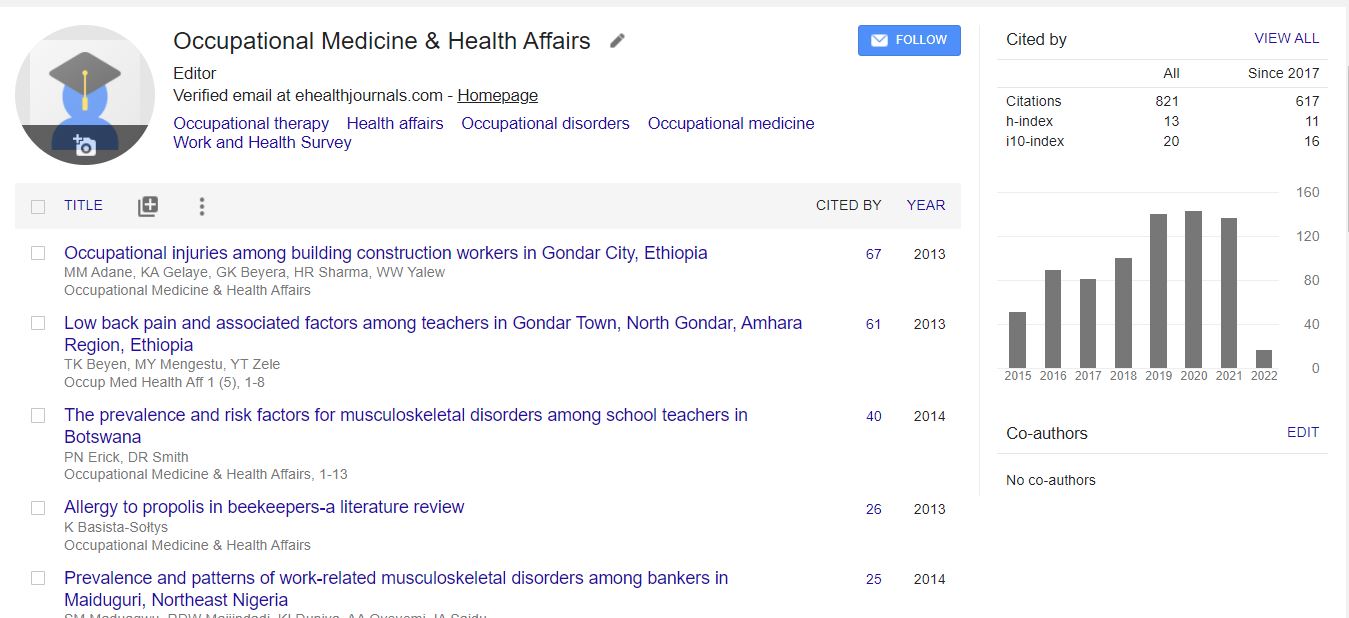Our Group organises 3000+ Global Conferenceseries Events every year across USA, Europe & Asia with support from 1000 more scientific Societies and Publishes 700+ Open Access Journals which contains over 50000 eminent personalities, reputed scientists as editorial board members.
Open Access Journals gaining more Readers and Citations
700 Journals and 15,000,000 Readers Each Journal is getting 25,000+ Readers
Google Scholar citation report
Citations :
Occupational Medicine & Health Affairs received citations as per Google Scholar report
Indexed In
- Index Copernicus
- Google Scholar
- Open J Gate
- Academic Keys
- China National Knowledge Infrastructure (CNKI)
- RefSeek
- Hamdard University
- EBSCO A-Z
- OCLC- WorldCat
- Publons
- Geneva Foundation for Medical Education and Research
- Euro Pub
- Geneva Foundation for Medical Education and Research
- ICMJE
Useful Links
Recommended Journals
Related Subjects
Share This Page
PHENOTYPIC VARIABILITY CONFIRMED BY NUCLEAR RIBOSOMAL DNA SUGGESTS A POSSIBLE NATURAL HYBRID ZONE OF TRIATOMA BRASILIENSIS SPECIES COMPLEX
International Conference on Environmental Health & Safety
Jane Costa
Instituto Oswaldo Cruz, Brazil
Posters & Accepted Abstracts: Occup Med Health Aff
Abstract
Triatoma brasiliensis macromelasoma occurs in Pernambuco state, Brazil, which is situated between the distribution areas of Triatoma brasiliensis brasiliensis (north) and Triatoma juazeirensis (south). T. b. macromelasoma displays greater variations in its chromatic phenotype than either T. b. brasiliensis or T. juazeirensis and patterns reminiscent of one or the other. Experimental crosses from each of these members of the T. brasiliensis species complex generated fertile offspring suggesting that viable hybrids could be present in nature, despite their significant genetic distances. Considering the geographical position of occurrence of the T. b. macromelasoma (in Pernambuco) it was proposed to be an area capable of supporting natural hybridization between T. b. brasiliensis and T. juazeirensis. Since phenotypic variability is expected, this study investigated the existence of intermediate chromatic phenotypes for T. b. macromelasoma in various locations in areas between the T. b. brasiliensis and T. juazeirensis occurrences. Thirteen different color patterns were for the first time characterized and nine of those displayed intermediate phenotypes. Molecular analysis performed using ribosomal DNA intergenic region, grouped all within the T. brasiliensis complex. The intermediate chromatic phenotypes, molecular analysis and experimental crosses all support the distinction of a zone of hybridization that gave rise to the T. b. macromelasoma through homoploidal evolution.Biography
Email: janecostabio@gmail.com

 Spanish
Spanish  Chinese
Chinese  Russian
Russian  German
German  French
French  Japanese
Japanese  Portuguese
Portuguese  Hindi
Hindi 